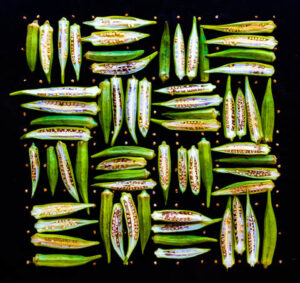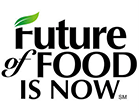
by Sarah Phillips
Do you realize that almost all of the food we eat has been genetically modified?
Our food and plant seed systems are global, primarily controlled by four large multinational corporations. Phil Howard, a professor of community sustainability at Michigan State University, shows in a graphic that over 60% of global seed sales are controlled by just four companies after decades of corporate consolidations. There used to be thousands of independent, mom and pop seed suppliers until about the mid-1980s.
The corporate seed companies are granted broad patent claims on seeds, preventing smaller seed breeders from entering the market, This has brought about a food system where they control farmers on how the food is grown, what is grown, and its yield, how it is distributed, and priced for the public. Since the 1980s, Monsanto has become the world leader in genetic modification of seeds and has won 674 biotechnology patents, more than any other company, according to U.S. Department of Agriculture data. Patents protect the work and investment that has gone into breeding and are an important motivation for any company to invest in research. Regional seed distributors often get supplies from those centralized sources who control availability and prices, which, in turn, negatively impact farmers.’ income and profits, leading to increased prices for the consumer.
These large seed breeders spend millions altering food plants via biotechnology using genetically modified methods called GMOs or genetic modifications called GMs, also known as gene editing, or GEs – both methods often called “genetically modified” in the literature, making it confusing to the public. GMOs is the transferring properties of a single gene from one organism to another so that its DNA contains one or more genes not normally found there. Any modification made to plants involves the deletion, insertion, silencing or repression of a gene, or to introduce a new trait to the plant which does not occur naturally in the species. GMOs are disclosed on food labels, while GMs or GEs are not. Both GMO and GM produced seeds can be eligible for patent protection.
Most scientists would say that almost all the food we eat has been “genetically modified” by man using traditional methods like selective breeding and cross-breeding to result food (and animals) with more desirable traits – a practice of artificial selection and selective breeding, dating back approximately 10,000 years. Carrots were not orange until the 1700’s and tomatoes used to be the size of marbles. Corn used to have very small ears and kernels with hard seed coats and low digestibility. These methods for change took a long time, and the traits were not very consistent within a yield or from year to year.
After scientists developed genetic engineering in the 1970s, they were able to make similar changes in a more specific way and in a shorter amount of time. They have been able to improve traits for desirable outcomes, such as herbicide or insect resistance, such as GMO corn, which improved crop yields and reduced the use of insecticides. This was done by inserting a gene in a soil bacterium called Bacillus thuringiensis (Bt), which produces a natural insecticide that has been in use for many years in traditional and organic agriculture. They copy that soil gene and insert it into the corn’s gene, giving it the insect resistance trait. Other genetic engineered traits (not GMOs) in produce could be achieved by making tomato stems shorter, perfect for fitting more plants into large greenhouses for growing, or for making fruit sweeter and larger, consistent in size and color, and to increase its shelf life, perfect for shipping long distances. Many corporate advances can be driven by consumer demand for “perfect” and beautiful produce, with consistent size and flavor. Agriculture scientists and produce companies are constantly trying to innovate, to improve their plants and tantalize the public – now there’s even designer fruit!
The first wave of GMO produce in the created through genetic engineering became available to consumers in the 1990s: summer squash, soybeans, cotton, corn, papayas, tomatoes, potatoes, and canola. Later apples, sugar beets (not cane sugar), and alfalfa were included. (GMO salmon and pigs, too). Now there’s even pink pineapple. The majority of genetically engineered plants – corn, canola, soybean, and cotton – are typically used to make ingredients that are then used in other food products. Such ingredients include cornstarch in soups and sauces, corn syrup as a general-purpose sweetener, and cottonseed oil, canola oil, and soybean oil in mayonnaise, salad dressings, cereals, breads, and snack foods.
Both GMO and GM seeds have resulted in a lack of gene diversity because these new patented traits in seeds are cloned to ensure consistent and predictable results. This is true in 75% percent of the world’s food supply which, in turn, makes us particularly vulnerable to a worldwide crop failure. Critics contend that editing plants also pose risks to biodiversity, deplete soil, and impact human health, among many negative impacts. These crops create broad monocultures, which have already wreaked havoc on ecosystems; take for example the common Cavendish banana, one of the world’s most consumed fruits, (they account for roughly 75 percent of the tropical fruit trade and more than a hundred billion are eaten annually) may also be on the verge of extinction. The reason for the problem comes down to a single disease, and that we were caught short on time; Because banana farmers are overwhelmingly growing the same exact crop – the Cavendish – they are all vulnerable to the same new and emerging disease, for which at present, there may be a cure – a company in the United States is developing a fungus-proof, genetically engineered banana that will be resistant to the deadly disease threatening to destroy most of the world’s banana crops. However, time may not be on our side – it takes 10 years to modify a crop, or to incorporate a transgene and develop a hybrid to resist the current banana’s disease for release to commercial farmers. Then, time is needed to cultivate the plants, produce fruit, and on and on.
While saving seed and even exchanging seed with other farmers for increased biodiversity purposes has been a traditional practice for mankind. Now these practices have become illegal for the plant varieties that are patented and owned by a corporation. Today’s modern farmer is required to buy and plant new patented seeds from these companies every year, eschewing seed saving practices, because these seeds are bred to grow just once. If these seeds are saved, they won’t don’t grow true to form, meaning you’re likely to get a plant that produces food that’s very different the second time around.
Now some seed farmers and organizations like Open Source Seed Initiative are trying to “free the seed” to keep things local all through the supply chain. Their efforts could make their local food systems more independent and resilient or better adapted to regional climates and soils. often with lower fertilizer requirements, lower cost, and better disease resistance. Regine Andersen of the Fridtjof Nansen Institute (Norway) and the Farmers’ Rights Project puts it, “Agricultural biodiversity is being eroded. This trend is putting at risk the ability of future generations to feed themselves. In order to reverse the trend, new policies must be implemented worldwide. The irony of the matter is that the poorest farmers are the stewards of genetic diversity.” (Andersen, Regine (April 2010). “An Issue of Survival”. Development & Cooperation. Internationale Weiterbildung und Entwicklung. Archived from the original on 09-27-2011, retrieved 5-5-2024 from wikipedia)
New research by the Rockefeller Foundation provides insight into using underutilized indigenous and traditional seeds and crops as a means of strengthening food and nutrition security in Africa. They have identified nearly two dozen cereals, fruits and vegetables, legumes, nuts, and roots that could provide stable and nutritious diets in the face of climate variability and extreme weather:
“Global food demand is projected to increase by more than 50% over the next 25 years, while the impacts of climate change are expected to drive crop productivity down. Over reliance on a few staple crops, including maize, wheat, and rice, threatens global food security, especially as extreme weather increasingly causes crop failures and reduced yields. As this new research demonstrates, it is possible to produce nutritious food at scale even as our climate changes,” said Roy Steiner, Senior Vice President for The Rockefeller Foundation’s Food Initiative. “With new investments and support, farmers across Africa will be equipped to scale up growth of underutilized indigenous and traditional crops like millet, mung bean, and okra that are good for people and planet alike.”
Watch the William Woys Weaver Video on Saving Heirloom Seeds
What can you do to help?
Buy local seeds
Plant and save seeds
Buy organic produce: The use of genetically modified organisms (GMOs), is prohibited in organic products. This means an organic farmer can’t plant GMO seeds, an organic cow can’t eat GMO alfalfa or corn, and an organic soup producer can’t use any GMO ingredients per the FDA
Buy ugly produce
photo and styling by Sarah Phillips copyright 2024 @FutureofFoodisNow






